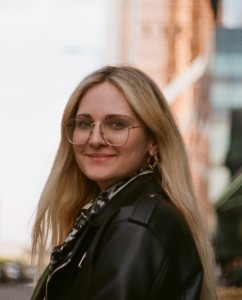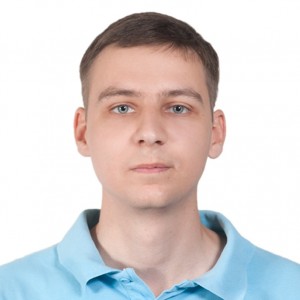 On the 16th of November 2022, as part of the Photonics Seminar Series, we will have the pleasure to have two 4th year PhD students from Skoltech Center for Photonic Science and Engineering present their research results: Julijana Cvjetinovic and Maksim Mokrousov
On the 16th of November 2022, as part of the Photonics Seminar Series, we will have the pleasure to have two 4th year PhD students from Skoltech Center for Photonic Science and Engineering present their research results: Julijana Cvjetinovic and Maksim Mokrousov
When: On the 16th of November 2022, Wednesday, at 17:00 MSK time
Where: New Campus room E-B2-3007 / BigBlueButton (Attention! The room number has been changed again!)
Julijana Cvjetinovic will give a talk entitled “On the optical and mechanical properties of nanostructured biosilica exoskeletons” and present her research of the dried diatom cells with organic components as well as cleaned frustules of hierarchically structured Coscinodiscus oculus-iridis.
Julijana Cvjetinovic received her B.S. in Physics from University of Novi Sad, Serbia and her M.S. in Condensed Matter Physics from National University of Science and Technology “MISiS”, Moscow, Russia. She is currently a 4th year PhD student at the Skoltech Center for Photonic Science and Engineering under the supervision of Prof. Dmitry Gorin and Prof. Alexander Korsunsky. Her project is devoted to the study of optical and mechanical properties of nanostructured microparticles based on diatom algae.
Diatom algae are one of the most abundant and ecologically important microorganisms as they are responsible for almost 20% of the total amount of oxygen and 40% of the annual carbon production in the ocean. One of their main features is the astonishingly intricate design and architecture of the silica cell wall called frustule. Diatoms represent an attractive object from the point of view of modern optics as well as material science, because of their hierarchically structured highly porous exoskeleton having unique optical and mechanical properties, optimized by millions of years of evolution to efficiently absorb light and produce biomass as a result of photosynthesis. Recent studies have revealed interesting optical properties of diatoms such as light transmission, diffraction, focusing and photoluminescence, highlighting their photonic crystal behavior. The mechanical performance of air-dried diatom cells with organic components as well as cleaned frustules of hierarchically structured Coscinodiscus oculus-iridis was elucidated using atomic force microscopy (AFM) and in situ nanoindentation inside a scanning electron microscope (SEM) column under static and dynamic loading. We observed outstanding mechanical behavior of dried cells and different mechanical properties among the layers of a cleaned frustule. A thorough study of the underlying relationship in the “structure-properties-function” chain of such nanostructured siliceous exoskeletons opens the possibility of a breakthrough to a new generation of nano- and microdevices for electronic, electromechanical, photonic, energy storage, and other applications.
 Maksim Mokrousov will present “Bimodal fluorescence and optoacoustic contrast agents based on nanostructures containing J-aggregates” and discuss remarkable characteristics of a bimodal contrast agent based on the indocyanine green dye (ICG) as a single signaling compound embedded in the biocompatible and biodegradable polymer shell.
Maksim Mokrousov will present “Bimodal fluorescence and optoacoustic contrast agents based on nanostructures containing J-aggregates” and discuss remarkable characteristics of a bimodal contrast agent based on the indocyanine green dye (ICG) as a single signaling compound embedded in the biocompatible and biodegradable polymer shell.
Maksim Mokrousov is a 4th year PhD student at the Center for Photonic Science and Engineering at Skoltech under the supervision of Professor Dmitry Gorin. He did his master’s degree in Photonics and Quantum Materials program at Skoltech. Currently Maksim is researching and developing bimodal fluorescence and optoacoustic contrast agents for his PhD thesis.
Multimodal imaging systems are in high demand for preclinical research, experimental medicine, and clinical practice. Combinations of optoacoustic technology with other modalities including fluorescence, ultrasound, MRI, OCT have been already applied in feasibility studies. Nevertheless, only the combination of optoacoustics with ultrasound in a single setup is commercially available now. A combination of optoacoustics and fluorescence is another compelling approach because those two modalities naturally complement each other. Here, we presented a bimodal contrast agent based on the indocyanine green dye (ICG) as a single signaling compound embedded in the biocompatible and biodegradable polymer shell. We demonstrate its remarkable characteristics by imaging using a commercial optoacoustic/fluorescence tomography system (TriTom, PhotoSound Technologies).